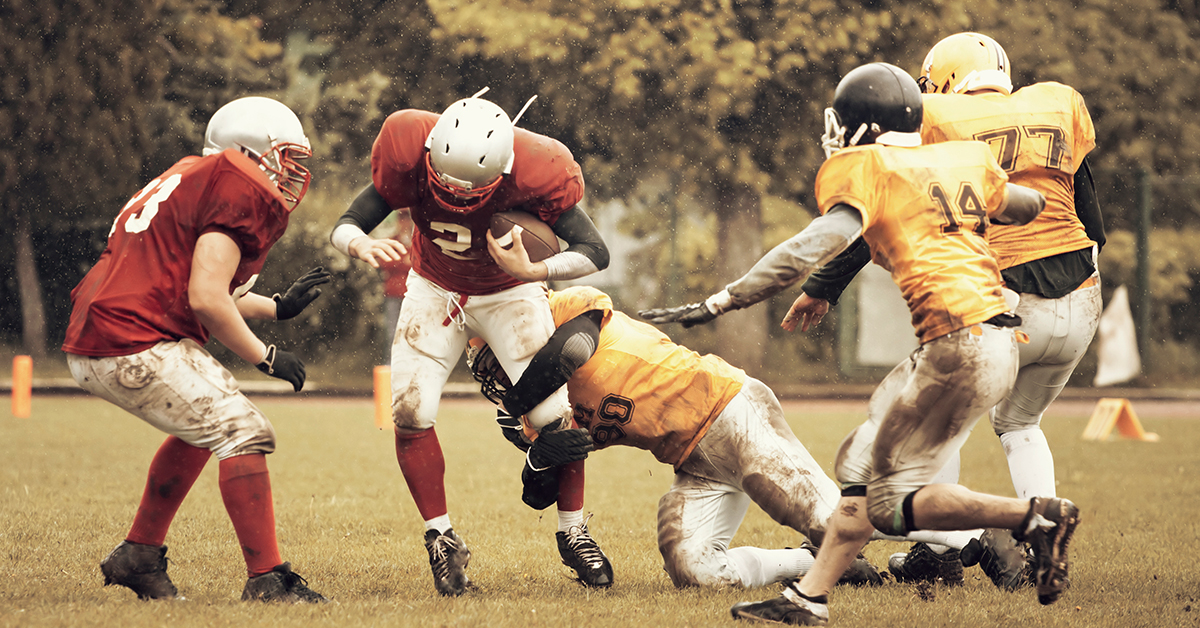
Sustaining a limiting or sidelining injury is the worst thing that can happen to an athlete. Because the first step in injury prevention is education, athletes are encouraged to take the time to learn some of the most common sports injuries.
Common Sports Injury #1: Ligament Sprains
Ligaments are strong connective tissues that connect bones. A sprain occurs when a ligament is overstretched and partially or completely torn. The most common sprain sustained while practicing or playing sports is an ankle sprain. Knee sprains and wrist sprains are also common. In order to properly treat a sprain, an orthopedic specialist must first classify it as one of the following:
- A grade 1 (mild) sprain
- A grade 2 (moderate) sprain
- A grade 3 (severe) sprain
Once a sprain is classified, it can be treated appropriately. RICE (rest, ice, compression, and elevation) and anti-inflammatory medications are generally recommended initially after a sprain. Grade 1 sprains usually do not require immobilization. Grade 2 sprains typically require a short period of immobilization in a brace, splint, or cast. Grade 3 sprains may require an extended period of immobilization and possibly surgery.
Common Sports Injury #2: Muscle and Tendon Strains
Tendons are strong fibrous cords of tissue that attach muscles to bones. A strain occurs when a tendon or the muscle it is attached to is partially torn. Complete tendon tears are referred to as ruptures and are treated as a separate injury. Sprains most often occur during sports that involve sprinting, jumping, and other movements that require a quick start from a stationary position. The foot, leg (hamstring and quadriceps), lower back, and neck are the body parts that are most commonly sprained while practicing or playing sports. Like sprains, initial treatment consists of RICE and anti-inflammatory medications. Depending on the severity of the strain, athletes may have to modify or stop activities when pain, swelling, and/or bruising associated with the injury does not improve.
Common Sports Injury #3: Patellofemoral Syndrome
Made up of the femur (thigh bone), tibia (shin bone), and patella (knee cap), the knee is the largest joint in the body. Patellofemoral syndrome, also known as “runners knee” or “jumpers knee”, refers to pain that is experienced in the front of the knee between the patella and femur. Patellofemoral syndrome may be caused by the following:
- Overuse
- Abnormal alignment of the patella
- Quadriceps muscle imbalance or weakness
Pain is experienced when the soft tissues and bones near the patella and front part of the femur become irritated and inflamed. Treatment may consist of any, all, or any combination of the following:
- RICE
- Anti-inflammatory medications
- Physical therapy
- Activity modification
- Bracing
In the majority of cases, patellofemoral syndrome is effectively treating using these non-surgical treatment options. In rare cases of severe patellofemoral syndrome, surgical intervention in the form of an arthroscopic debridement and/or ligament release may be used as a treatment option.
Common Sports Injury #4: Shin Splints
The tibia and fibula are the two bones that make up the lower leg. The tibia or shin bone is the larger of the two and is located medially or towards the midline of the body. When running and jumping athletes change the frequency, duration, or intensity of their training regime, the muscles that attach to the inner portion of the tibia become irritated and inflamed and a condition known as shin splints develops. The condition typically produces the following symptoms:
- Pain
- Throbbing
- Tenderness
- Soreness
Shin splints are especially problematic for athletes because symptoms usually get worse with physical activity. RICE, anti-inflammatory medications, physical therapy, and shoe/cleat changes can be used to treat mild-moderate shin splints. In order to be effectively treated, severe shin splints may require a break from practice and competition.
Seeking Treatment
In some cases, the injuries presented in this article can not be avoided. If you have sustained an injury and your symptoms are not going away on their own or are getting worse, please contact our office to make an appointment. One of our orthopedic specialists will accurately diagnose your injury and come up with a treatment plan to get you back on the field ASAP.
